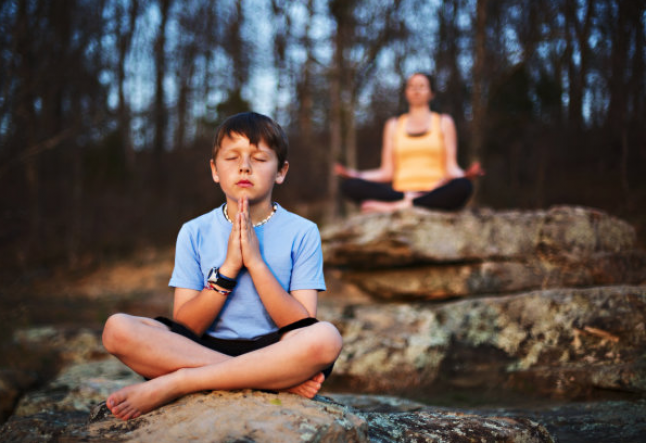the poetry of patanjali’s yoga sutras: exploring sutras 1.12 – 1.15

I have spent over the last 15 years reading a ridiculous amount of “self help” books. All of them attempting to provide the “ultimate” answer to the questions: How do I find inner peace? Who am I? What is the purpose of my life?
I have compared most of them against the wisdom of Yoga and the teachings found in the Yoga Sutras and I have learned two things.
1. They mainly offer a variation of two tools stated in Sutra 1.12
a. Abhyasa: Practice, Practice, Practice
b. Vairagya: Let Go, Let Go, Let Go
2. The simplest tool is often the least attractive, yet has the greatest long term influence
There are so many powerful and influential teachers who have written incredibly thought provoking and wise books from authors like Eckhart Tolle, Marianne Williamson, Dan Millman, Deepak Chopra, Gary Zukav, Louis Hays to modern writers who have shifted out of the spiritual awakening of the New Age into positive psychology topics like vulnerability and happiness. Teachers/Writers such as Brene Brown, Don Miguel Ruiz and Martin Seligman. There are too many to list but just to give you an example of some authors.
I have been teaching Yoga (not just Asana) for over 15 years and I have yet to find a “best seller” that takes the simple teachings of Sutra 1.12 and makes them appeal to the masses. I am fine with this, it just makes me wonder why the Yoga Sutras have never gone main stream.
As we continue with the journey through the Yoga Sutras of Patanjali in this series of articles, we arrive at Sutra 1.12 and are offered two fundamental tools that one needs to find inner peace, discover the “Self” and understand one’s purpose.
Sutras 1.12 – 1.15 are ridiculously simple yet it appears to be the hardest obstacle for most Yoga practitioners. I believe it is challenging because the teaching is a paradox. The teaching is not to become a master of both tools, it is the process of attaining mastery and concurrently releasing the mastery.
Swami Jnaneshvara says it best, ”Never Give up ~ Always Let Go”.*
Never Give up = Abhyasa = Practice with all earnestness
Always Let Go = Vairagya = Non-attachment in order to be fully present.
I believe each person has a youthful child and a wise teacher in them. Abhyasa is what nurtures the eternal teacher to feel grounded in their wisdom. Vairagya is what inspires the youthful child to remain in wonder and awe. I often imagine within myself, Abhyasa and Vairagya like the teacher and the child walking hand in hand through life. May you feel this in your own life.
The Wise Teacher shares with the Child,
“I have discovered the deepest part of myself, perfect and whole”
The Child asks,
“Wow, what does it look like…is it sparkly, colorful or dark…
What does it taste like…is it juicy, sweet, salty or sour….
What does it feel like….is it soft, firm or furry….
What does it sound like….is it like the ocean or the humming of the bee….
What does it smell like…is it like the honeysuckles of summer or the tuberoses of winter…
The Wise Teacher says,
“ Sweet Child, your questions have left me in awe…let me continue on my journey and I will return tomorrow with a little more insight for you”*
Sutra 1.12*
abhyasa vairagya abhyam tan nirodhah
The state of yoga is attained via a balance between effort for practice (abhyasa) and freedom (vairagya)
Sutra 1.13*
tatra sthitau yatno ‘bhyasah
Practice requires the effort towards steadiness
Sutra 1.14*
sa tu dirghakala nairantarya satkara adara asevito dridhabhumih
Practice becomes grounded through consistent earnest uninterrupted effort for a long period of time
Sutra 1.15*
drishta anushravika vishaya vitrishnasya vashikara sanjna vairagyam
Freedom is attained through the self mastery of releasing bondage to sensory pleasures that leave longing and clinging for the seer.
Read next >> 4 tips to live and learn through yoga